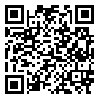BibTeX | RIS | EndNote | Medlars | ProCite | Reference Manager | RefWorks
Send citation to:
URL: http://jhr.ssu.ac.ir/article-1-302-en.html
2- Epidemiology, Social determinants of health research center, Assistant Professor, School of Health, Birjand University of Medical Sciences, Birjand, Iran.
3- Health education & promotion, School of Health, Birjand University of Medical Sciences, Birjand, Iran , mitra_m2561@yahoo.com
Introduction: Transtheoretical model (TTM) is one of the models applied to assess the physical activity behavior. From critiques to this model is that the majority of the studies based on the transtheoretical model have employed cross-sectional designs so that it fails to show the dynamic nature of change. Thus, the aim of the current study was to investigate transitional shifts in Physical Activity Behavior among Birjand universities employees Based on Transtheoretical Model.
Materials & Methods: This prospective study with 6 month follow-up was conducted on 200 employees of Research and Education departments of Birjand university of medical sciences. 179 of participants’ completed questionnaires at two time periods at baseline and follow-up 6 month later. The instrument for data collection was a questionnaire included demographic variables and constructs of Transtheoretical model which completed by using the self-reported method.
Results: Transitional shifts in physical activity behavior were shown in 4 patterns: stable sedentary (26.3%), stable active (39.1%), exercise adopters (12%) and exercise relapsers (22.6%). Stable active group had a significant decrease in mean score of pros. exercise adopters had a significant increase in the mean scores of self-efficacy and pros. Also, significant decreases were observed in the mean scores of behavioral processes, cognitive processes, and self-efficacy among exercise relapsers. Mean scores for the pros, self-efficacy, behavioral and cognitive processes at baseline and at follow-up showed significant differences between the 4 patterns.
Conclusion: The results of this study provide partial support for internal validity of ttm. It seems that interventions based on this model can be effective in adopting and maintaining physical activity behavior.
Received: 2016/04/30 | Accepted: 2016/06/7 | Published: 2016/09/13
| Rights and permissions | |
 |
This work is licensed under a Creative Commons Attribution 4.0 International License. |





